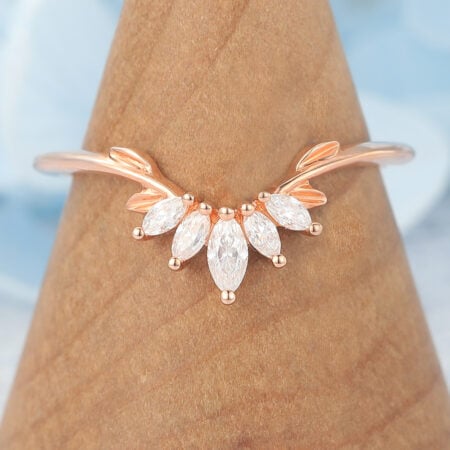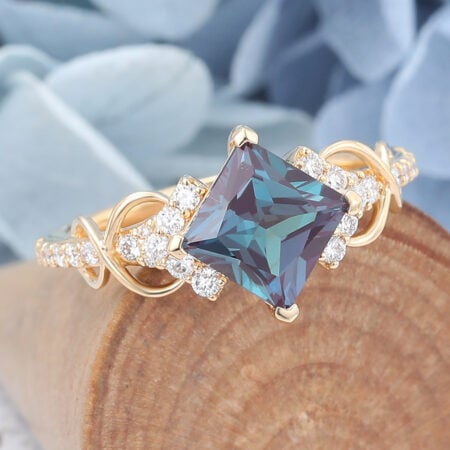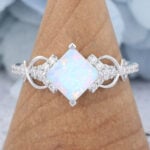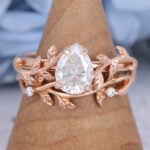Can You Shower with Gold Jewelry? Expert Tips for Everyday Wear
Can you shower with gold jewelry without affecting its appearance? Many people wear rings, necklaces, and bracelets every day, and water exposure is almost inevitable. Understanding how gold reacts to showers, soaps, and other daily moisture will help you make smart choices for everyday wear. This guide explores the effects of water on gold jewelry, highlights potential risks, and offers practical care tips to keep your pieces looking their best.
Common Types of Gold Jewelry
10K Gold: Contains about 41.7% pure gold mixed with other metals, making it durable and more affordable. Its hardness makes it ideal for everyday jewelry, though frequent exposure to soaps and chemicals can slightly dull its shine.
14K Gold: With 58.3% pure gold, 14K offers a good balance between richness of color and durability. It is resistant to tarnish and suitable for rings, necklaces, and bracelets that are worn daily.
18K Gold: Comprising 75% pure gold, 18K is richer in color and softer than 10K or 14K, giving a luxurious look. While highly resistant to rust, it can scratch more easily and may require gentle care.
Gold Plated: A thin layer of gold is applied over a base metal. While affordable and attractive, the thin layer can wear off or lose luster with frequent water exposure.
Gold Filled: Features a mechanically bonded thicker gold layer on a base metal. More durable than plated jewelry, it looks and feels closer to solid gold, but repeated water exposure can still reduce its longevity.
Gold Vermeil: Silver base coated with a thick layer of gold, offering durability and a rich appearance. It combines the quality of gold with a more affordable price, but prolonged exposure to moisture can affect the surface over time.
What Happens When You Shower with Gold Jewelry
When you shower with gold, the effects depend on the type of gold jewelry you wear. 10K, 14K, and 18K gold are generally resistant to rust and tarnish, so occasional showers are usually safe, though frequent exposure to soap, shampoo, or chlorinated water can gradually dull their shine. In contrast, gold plated, gold filled, and gold vermeil jewelry are more sensitive to water: constant exposure may wear down the gold layer or affect its luster over time.
How Different Gold Types React to Water
10K, 14K, and 18K gold are generally safe for occasional showers and resist rust or tarnish, but frequent exposure to soaps, shampoos, or chlorinated water can gradually reduce their shine or cause minor surface scratches. Gold plated jewelry is more sensitive, as its thin gold layer can wear off quickly with repeated water contact. Gold filled pieces are more durable than plated ones, but repeated showering may still shorten their lifespan. Gold vermeil, with a silver base and thick gold coating, offers good durability, though constant water exposure over time can slightly dull its surface.
Can You Shower with Gold Jewelry
Can you shower with gold jewelry safely? While solid gold is generally resilient, daily exposure to water, soaps, and body products can gradually affect its luster. To keep your pieces looking their best, it’s recommended to remove gold plated, gold filled, and gold vermeil jewelry before showering. Even for 10K, 14K, or 18K gold, occasional cleaning with a soft cloth after water contact helps maintain its shine and prolong its life. Following the simple precautions allows you to enjoy your jewelry every day without compromising its beauty.


Potential Risks of Showering with Gold Jewelry
Showering with gold jewelry can pose risks beyond tarnish. Rings and bracelets may become slippery when wet, increasing the chance of accidental loss or dropping. Soap, conditioner, or body wash residue can accumulate around settings, dulling the sparkle of gemstones or making clasps harder to open. Perfumes, hair products, and other chemicals can also interact with gold alloys or plated layers, subtly affecting color or finish over time.
Care Tips for Wearing Gold Jewelry Every Day
- Remove jewelry during showers or baths: Even solid gold can lose some shine over time. Removing rings, bracelets, and necklaces while showering helps prevent soap residue buildup and accidental slips.
- Avoid contact with harsh chemicals: Shampoos, conditioners, perfumes, and cleaning products can subtly affect gold’s finish. Apply these products before putting on your jewelry.
- Clean gently and regularly: Use a soft cloth or mild soap with lukewarm water to clean your jewelry. Avoid abrasive materials that can scratch the surface, especially on plated or filled pieces.
- Store jewelry properly: Keep pieces separate in soft pouches or lined jewelry boxes to prevent scratches and tangling. Avoid stacking delicate gold chains together.
- Inspect settings frequently: Check clasps, prongs, and gemstones regularly to ensure they are secure. This is particularly important for rings and gemstone jewelry worn daily.
- Rotate your pieces: Wearing the same piece every day increases wear. Rotating jewelry allows each item to rest and reduces long-term damage.
When to Wear Gold Jewelry and When to Remove It
Knowing when to wear gold and when to remove it helps preserve its beauty. 10K, 14K, and 18K gold pieces are generally durable and can handle occasional water exposure, making them suitable as jewelry that can get wet during brief handwashing or rain. However, delicate items like gold plated, gold filled, and gold vermeil should be removed before showers, swimming, or workouts. By distinguishing which pieces can tolerate moisture and which need extra care, you can enjoy your jewelry safely every day while maintaining its shine and longevity.
Conclusion
Understanding the properties of different gold types and how they react to water is key for everyday jewelry care. While solid gold like 10K, 14K, and 18K can usually withstand occasional showers, delicate pieces such as gold plated, gold filled, or gold vermeil require extra caution. By following simple care tips and knowing which pieces can tolerate moisture, you can confidently enjoy your jewelry without compromising its beauty. So next time you wonder, can you shower with gold jewelry, you’ll know how to protect your treasured pieces while keeping them looking their best.
Also Read: Can Sterling Silver Get Wet – Tips To Keep Your Jewelry Looking Like New
FAQs About Can You Shower with Gold Jewelry
Can gold get wet?
Yes, solid gold like 10K, 14K and 18K gold can get wet, but prolonged exposure to water may dull its shine over time.
Does gold rust in water?
No, gold does not rust because it is a non-ferrous metal.
Can 10K, 14K, and 18K gold get wet?
Yes, these solid gold types can tolerate occasional water exposure.
Can you shower with 10K, 14K, or 18K gold?
Occasionally, yes, but frequent exposure to soap and hot water may dull its surface.
Will 14K gold tarnish in water?
14K gold may slightly dull over time, but it does not tarnish easily like plated metals.
Can you wear 14K gold every day?
Yes, 14K gold is durable enough for daily wear with proper care.
Can you wear white gold in the shower?
Occasional exposure is fine, but frequent contact with water and chemicals may wear down its rhodium plating.
Can you shower with sterling silver?
It’s not recommended; water and soap can cause tarnishing over time.
Can I wear stainless steel in the shower?
Yes, stainless steel is water-resistant and generally safe for showering.
Can I shower with gold plated jewelry?
No, frequent water exposure can wear off the thin gold layer.
Is gold vermeil waterproof? Can you shower with gold vermeil?
Gold vermeil is not waterproof; avoid showering with it to preserve the gold layer.
Is gold filled jewelry waterproof? Can gold filled jewelry get wet?
Gold filled jewelry can tolerate occasional water but should not be exposed frequently to preserve its layer.
What jewelry can you wear in the shower?
Solid gold (10K–18K) and stainless steel can usually get wet; avoid plated, vermeil, and delicate pieces.



